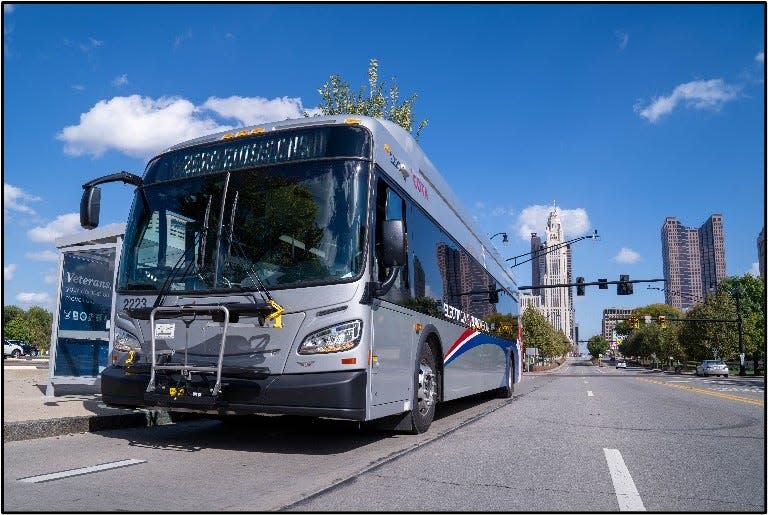COTA to study Dublin-New Albany route to meet demand for new jobs fueled by Intel growth

The Central Ohio Transit Authority has been awarded a $1.26-million grant to study how to efficiently transport workers between two of Greater Columbus' hottest jobs markets.
The funding is coming from the Ohio Department of Transportation's Office of Transit’s Workforce Mobility Partnership Program Awards, and will be used to study transporting workers between job centers from Dublin to New Albany, including the Intel computer chip manufacturing facility in Licking County.
An east-west feasibility study would focus on the future regional workforce with connections to and from suburban job centers, including Dublin Methodist Hospital, Dublin’s Bridge Street District, Easton Town Center, Northeast Columbus job centers along Morse Road, and the New Albany International Business Park, including Intel, according to COTA.
The study would assess costs and benefits and workforce transit needs in the northern part of the Columbus area, which is one of the fastest job growth areas in the state.
Currently, there is no direct transit access between those job centers.
"Our current (west-east) service doesn't go all the way to Dublin right now," said Jeff Pullin, COTA spokesman. The study will help determine "not only the route, but which neighborhoods it would be going through."
Leaders in communities that stand to benefit are pleased to be included.
“As we prepare for the projected population growth in the region, collaborative traffic management is crucial," Megan O’Callaghan, Dublin city manager, said in an emailed statement.
Electric vehicle stations get boost
COTA also is receiving a $1.44-million grant from ODOT to continue expanding its electric vehicle (EV) charging program at COTA's Rickenbacker Mobility Center in southern Franklin County. It is in a partnership with Mid-Ohio Regional Planning Commission (MORPC) and local municipalities to promote and expand EV use.
The funding, not directly related to the northern, cross-town study, would pay for six additional EV charging stations at Rickenbacker and four additional quick charging stations for buses only. COTA's goal is to be diesel-free by 2025 and have net-zero greenhouse gas emissions by 2045.
COTA, in turn, is providing an additional $675,000 from its general fund in support for both programs and will partner with MORPC and the local municipalities to ensure the best connections.

COTA's responsibility is "to provide our residents with equal access to these new jobs and careers while helping ensure that companies such as Intel and many others operating here have the workers they need to prosper,” said COTA President and CEO Joanna M. Pinkerton.
An estimated 350,000 new jobs are expected in the region by 2050. Pinkerton, who is resigning in May, called efficient workforce movement "pivotal."
The grant money is part of $100 million in state funds from seven grant programs that Ohio Gov. Mike DeWine and ODOT Director Jack Marchbanks announced this month, all focused on workforce mobility, senior citizens and busing. The funding will go to 384 transit projects across the state for transit fleet expansion, replacement vehicles, maintenance, facility upgrades, new equipment and technology and operating assistance.
dnarciso@dispatch.com
This article originally appeared on The Columbus Dispatch: COTA to use Ohio grants for northern cross-town route study for Intel

